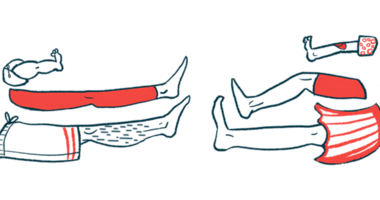Excess exercise may worsen Parkinson’s symptoms, report says
2 UK patients who overdid it saw fatigue, motor symptoms worsen

Although physical exercise has well-established benefits for people with Parkinson’s disease, too much of it may worsen fatigue and motor symptoms, according to a report of two cases in the U.K.
Both patients believed that intense exercise could help them overcome the disease, including reversing the degeneration of dopaminergic neurons, the nerve cells that are lost in people with Parkinson’s.
“Although we do not want to detract patients from exercising for [Parkinson’s disease], we want to express caution about the danger of overexercise,” the researchers wrote. “Clinicians should include an enquiry about the exact exercise regimen in their follow-up routine in [Parkinson’s] patients.”
The letter, “Running into Trouble: The Problem of Overexercise in Parkinson’s Disease (in some),” was published in Movement Disorders.
Parkinson’s disease is caused by the progressive dysfunction and death of dopaminergic neurons, which are responsible for making dopamine and are primarily found in a part of the brain called the substantia nigra. The nigrostriatal pathway is a circuit of dopaminergic neurons that runs from the substantia nigra to the striatum, another brain region, that’s needed for motor control.
Patients’ exercise routines went beyond recommended programs
Studies show exercise benefits people with Parkinson’s and may be an important part of a patient’s overall treatment plan, alongside medications used to manage Parkinson’s disease symptoms. However, some patients may tend to exercise more than recommended, which can lead to weight loss, fatigue, and an increase in off episodes, periods when symptoms return between treatment doses.
The researchers described the cases of two Parkinson’s patients whose excessive levels of exercise led to negative effects.
One of the patients, a 62-year-old woman, was newly diagnosed with Parkinson’s. She had mild symptoms affecting the right side of the body and an abnormal dopamine transporter (DAT) scan, an imaging scan that can detect the levels of dopaminergic neurons. She was taking levodopa and carbidopa three times a day.
The woman was advised to start walking for half an hour, three times a week. However, after three months, she reported fatigue and weight loss. It turned out she had dramatically increased her exercise, walking an hour three times a day and doing yoga and other classes, hoping to reverse her condition. After cutting back to the recommended walking routine, her fatigue and weight loss went away within six months, without changing her medication.
The other patient was a 70-year-old man with a three-year diagnosis of Parkinson’s affecting the right side of the body, also with an abnormal DAT scan and receiving a similar treatment. The man was rarely involved in sports before his diagnosis.
After being diagnosed with Parkinson’s, the man began exercising excessively, using a treadmill and going on long hikes. Twice, he experienced severe episodes of stiffness and immobility, once while on the treadmill and once after a long hike, and needed emergency help. He recovered each time with rest, fluids, and levodopa. He said he believed intense exercise could reverse his disease.
Doctors may mistake fatigue from too much exercise as a symptom of Parkinson’s or “low mood,” and prescribe antidepressants that aren’t necessary, the researchers wrote.
“We give two examples of overexercise in [Parkinson’s disease], but have seen similar others, and want to highlight that although exercise is important, overexercise can be detrimental,” they wrote. “If exercise does indeed have a positive effect on the nigrostriatal system, moderate exercise might be sufficient.”







